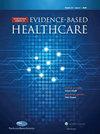Protocol for evaluating the in vitro effect of violet light-emitting diodes (LEDs) 410 nm ± 10 nm on yeast cultures
Q3 Medicine
International Journal of Evidence-Based Healthcare
Pub Date : 2022-12-05
DOI:10.17267/2675-021xevidence.2022.e4736
引用次数: 0
Abstract
BACKGROUND: Candida spp and Malassezia spp cause superficial infections that may be resistant to conventional treatments. Violet light-emitting diodes (LEDs) therapy is a therapeutic alternative. PURPOSE: To describe the protocol for evaluating the antifungal effect of violet LEDs 410 nm ± 10 nm on Candida spp and Malassezia spp in vitro. PROTOCOL: LEDs 410 nm ± 10 nm are applied to a fungal suspension at fluences of 61.13 J/cm2, 91.70 J/cm2, and 183.39 J/cm2. The isolates are cultured for 48 to 72 hours. Colony forming units (CFUs) are quantified by visual counting and percent culture plate occupancy by digital analysis. Morphology is assessed by light microscopy and Gram staining, and yeast metabolism/function by transmission electron microscopy, assessment of reactive oxygen species, and DNA fragmentation. DATA ANALYSIS: the percentage of LEDs inhibition is calculated considering the growth of the negative control condition and the percentage of plate occupancy by yeasts by dividing the number of pixels classified as colonies by the total number of pixels on the plate. The morphological and functional aspects are described for the intervention and negative control. The ANOVA test is used to compare the mean percentages of growth inhibition and plate occupancy between the three fluences of LEDs 410 nm ± 10 nm and the negative control. ESTIMATED RESULTS: We intend to determine the antifungal effect of the different fluences of LEDs 410 nm ± 10 nm on Candida spp and Malassezia spp. The evaluation of other fungal species by this protocol should be investigated.410 nm±10 nm紫光发光二极管(led)对酵母培养物的体外效果评估方案
背景:念珠菌和马拉色菌引起的浅表感染可能对常规治疗有耐药性。紫色发光二极管(led)疗法是一种治疗选择。目的:建立410 nm±10 nm紫光led对念珠菌和马拉色菌体外抑菌效果的实验方案。方案:410 nm±10 nm的led应用于真菌悬浮液,影响分别为61.13 J/cm2, 91.70 J/cm2和183.39 J/cm2。分离株培养48至72小时。菌落形成单位(cfu)通过目视计数和百分比培养板占用数字分析进行量化。形态学通过光镜和革兰氏染色评估,酵母代谢/功能通过透射电子显微镜,评估活性氧和DNA片段。数据分析:将被分类为菌落的象素数除以培养皿上的总象素数,综合考虑阴性对照条件的生长和酵母占据培养皿的百分比,计算出led抑制的百分比。形态学和功能方面描述了干预和阴性对照。采用方差分析(ANOVA)检验比较led在410 nm±10 nm的三种影响下与阴性对照的平均生长抑制率和占板率。估计结果:我们拟测定不同波长(410 nm±10 nm)的led对念珠菌和马拉色菌的抑菌效果,对其他真菌的抑菌效果有待进一步研究。
本文章由计算机程序翻译,如有差异,请以英文原文为准。
求助全文
约1分钟内获得全文
求助全文
来源期刊

International Journal of Evidence-Based Healthcare
Medicine-Health Policy
CiteScore
1.80
自引率
0.00%
发文量
39
期刊介绍:
The International Journal of Evidence-Based Healthcare is the official journal of the Joanna Briggs Institute. It is a fully refereed journal that publishes manuscripts relating to evidence-based medicine and evidence-based practice. It publishes papers containing reliable evidence to assist health professionals in their evaluation and decision-making, and to inform health professionals, students and researchers of outcomes, debates and developments in evidence-based medicine and healthcare.
The journal provides a unique home for publication of systematic reviews (quantitative, qualitative, mixed methods, economic, scoping and prevalence) and implementation projects including the synthesis, transfer and utilisation of evidence in clinical practice. Original scholarly work relating to the synthesis (translation science), transfer (distribution) and utilization (implementation science and evaluation) of evidence to inform multidisciplinary healthcare practice is considered for publication. The journal also publishes original scholarly commentary pieces relating to the generation and synthesis of evidence for practice and quality improvement, the use and evaluation of evidence in practice, and the process of conducting systematic reviews (methodology) which covers quantitative, qualitative, mixed methods, economic, scoping and prevalence methods. In addition, the journal’s content includes implementation projects including the transfer and utilisation of evidence in clinical practice as well as providing a forum for the debate of issues surrounding evidence-based healthcare.
 求助内容:
求助内容: 应助结果提醒方式:
应助结果提醒方式:


